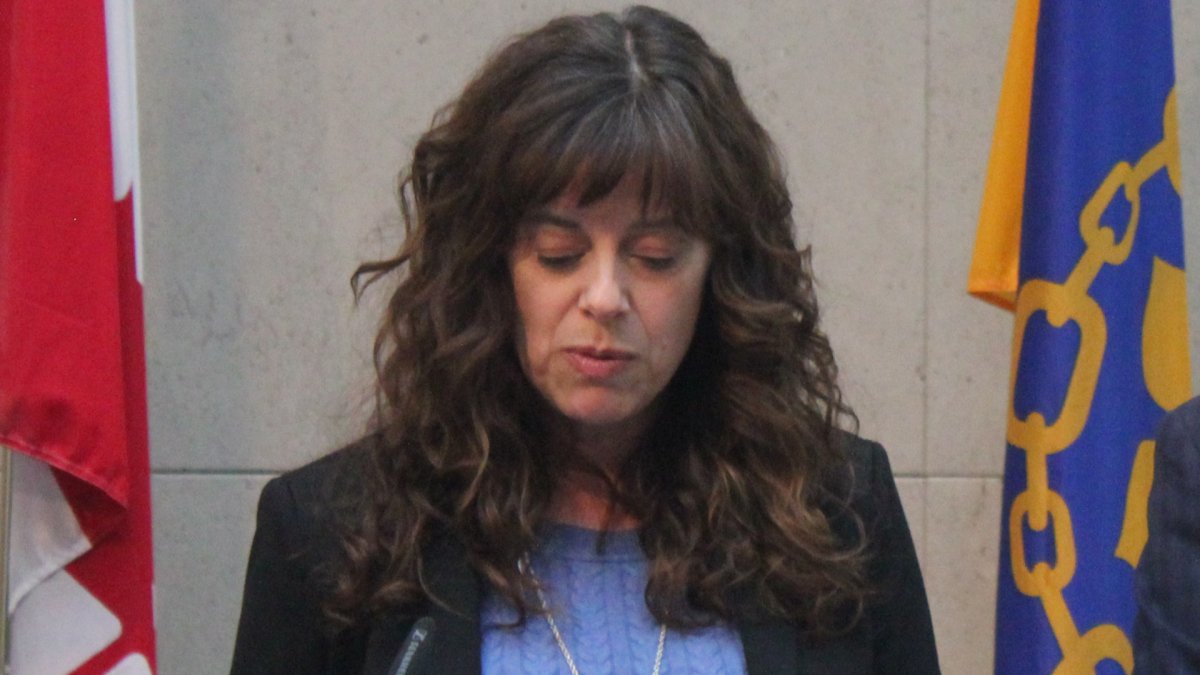Hamilton’s medical officer of health says increasing COVID-19 cases and the rash of institutional outbreaks were “pointing” toward more restrictions for residents amid the second wave of the pandemic.

During a virtual town hall, heard on 900 CHML on Thursday night, Dr. Elizabeth Richardson said current health data suggested Hamilton was headed into the orange category of the province’s new COVID-19 response framework.
“Many of our indicators put us squarely into the orange category, and we’re continuing to work with the provincial government around the next steps here,” Richardson said.
On Friday, the province went one step further, placing the city of Hamilton into the red category.
During his daily COVID-19 address, premier Doug Ford along with health minister Christine Elliot revealed a new threshold to the new colour-coded COVID-19 framework in response to a surge in coronavirus cases.
Ford said the change was made in consultation with public health officials following new pandemic modelling which suggests the province could hit 6,500 cases a day by mid-December.
“The modelling I saw now is not the modelling that I saw a week ago, or 9 days ago,” Ford said.
“Nine days. ten days ago what I saw was anywhere from 900 to 1200 cases.”
Halton and York region will join Hamilton in the red zone with Toronto and Peel Region, as of Monday.
- Buzz kill? Gen Z less interested in coffee than older Canadians, survey shows
- ‘She gets to be 10’: Ontario child’s heart donated to girl the same age
- Canada updating sperm donor screening criteria for men who have sex with men
- Bird flu risk to humans an ‘enormous concern,’ WHO says. Here’s what to know
Health officials say there have been 407 positive coronavirus cases in Hamilton in the last 10 days with the city averaging around 43 cases per day over the last two weeks.
The city was in the yellow tier of the province’s framework, which impacts businesses like bars and restaurants in that they can only stay open until midnight and serve alcohol between 9 a.m. and 11 p.m.
Gyms also have limited occupancies indoors and with minimum spacing requirements between patrons classes and weight rooms.
A move to red means more limits on capacity in restaurants and bars with earlier closures.
Businesses offering personal care services, such as hair care and esthetics, could also see stricter measures.
Gathering limits for all organized public events and social gatherings will be capped at 10 people indoors and 25 people outdoors.
Two other factors that contributed to the city’s downgrade, according to Richardson, were the increasing number of outbreaks across Hamilton and limit bed space in local hospitals.
“We currently have 20 outbreaks again — you know, a huge number,” Richardson said.
“I really was hoping we would not get to these kinds of numbers in the second wave. But unfortunately, we are there.”
Hamilton’s institutional outbreaks involve 180 people as of Nov. 12 at 10 long-term care homes and two retirement facilities.
One of the most problematic is the outbreak at Chartwell Willowgrove, which has now accounted for eight deaths since its start on Oct. 22. The home has 59 total cases involving 37 residents, 21 staff members and one essential visitor.
The city’s hospitals say 20 people are restricted to beds requiring treatment for COVID-19 as of Thursday, with Hamilton Health Sciences (HHS) reporting an acute occupancy rate of about 98 per cent.
Ontario’s pandemic modelling shows there has been a 61 per cent increase in hospitalized COVID-19 patients over the past three weeks and a 167 per cent increase over six weeks. However, the average patient’s stay in the hospital due to COVID-19 has declined.
Meanwhile, Canada’s public health agency is showing concern over recent testing numbers across the country. They show average daily testing numbers are down more than 25 per cent compared to a month ago.
The agency reported average daily tests were 55,000 this week, down from 61,000 a week ago and down from 77,000 in the week before that.
Concerned over those numbers, Richardson is also urging residents to get tested when they feel ill.
“It’s so important that you stay home and go get tested if you have COVID-19 symptoms,” Richardson said.
“Everybody needs to be diligent about these all of the time. Transmission can happen at any time.”
— With files from Jessica Patton









Comments